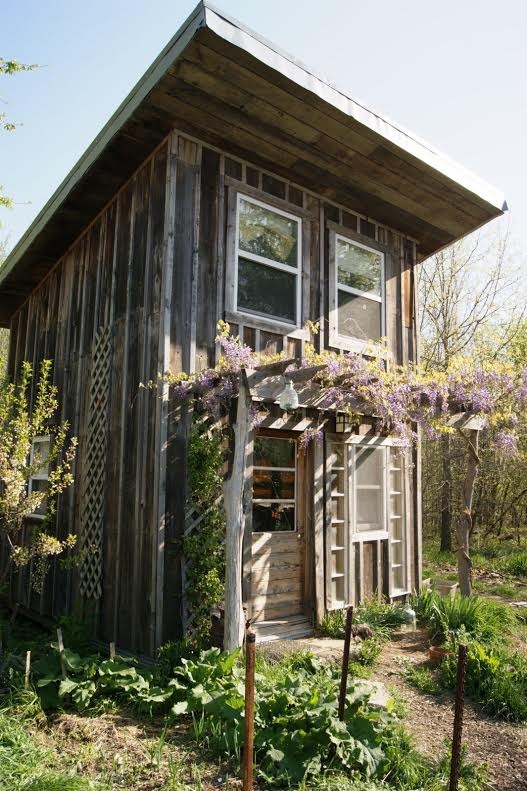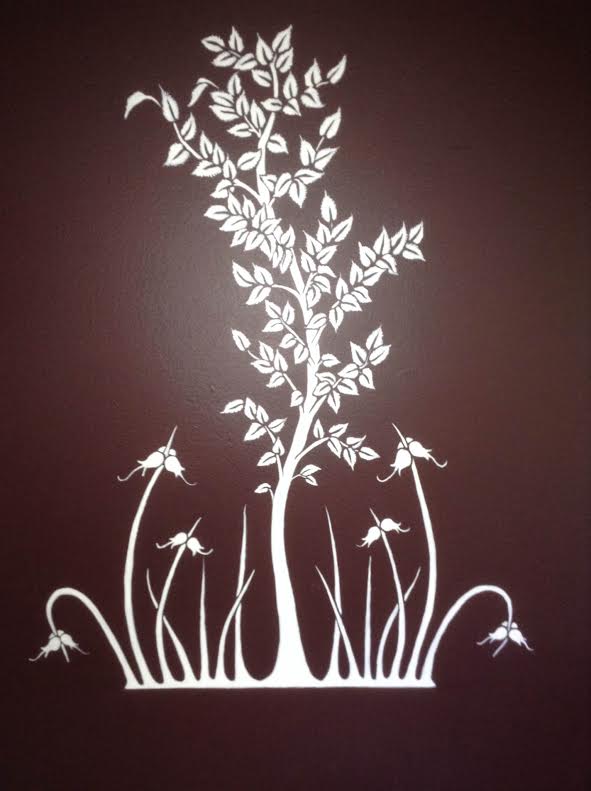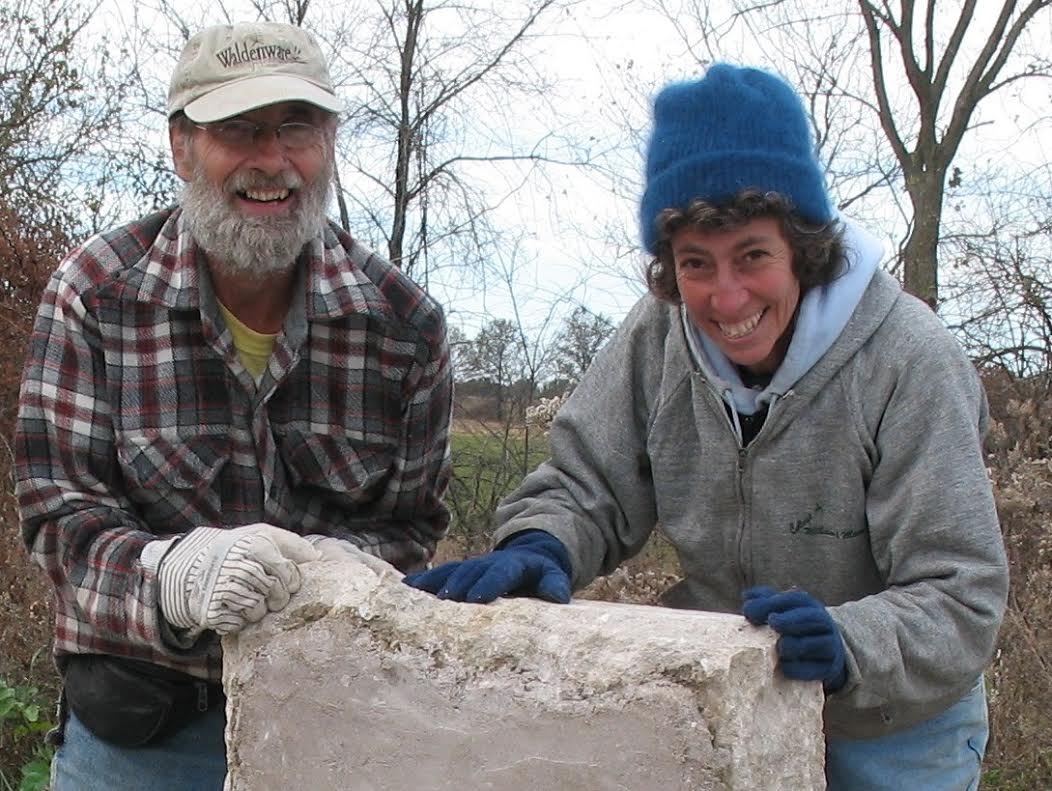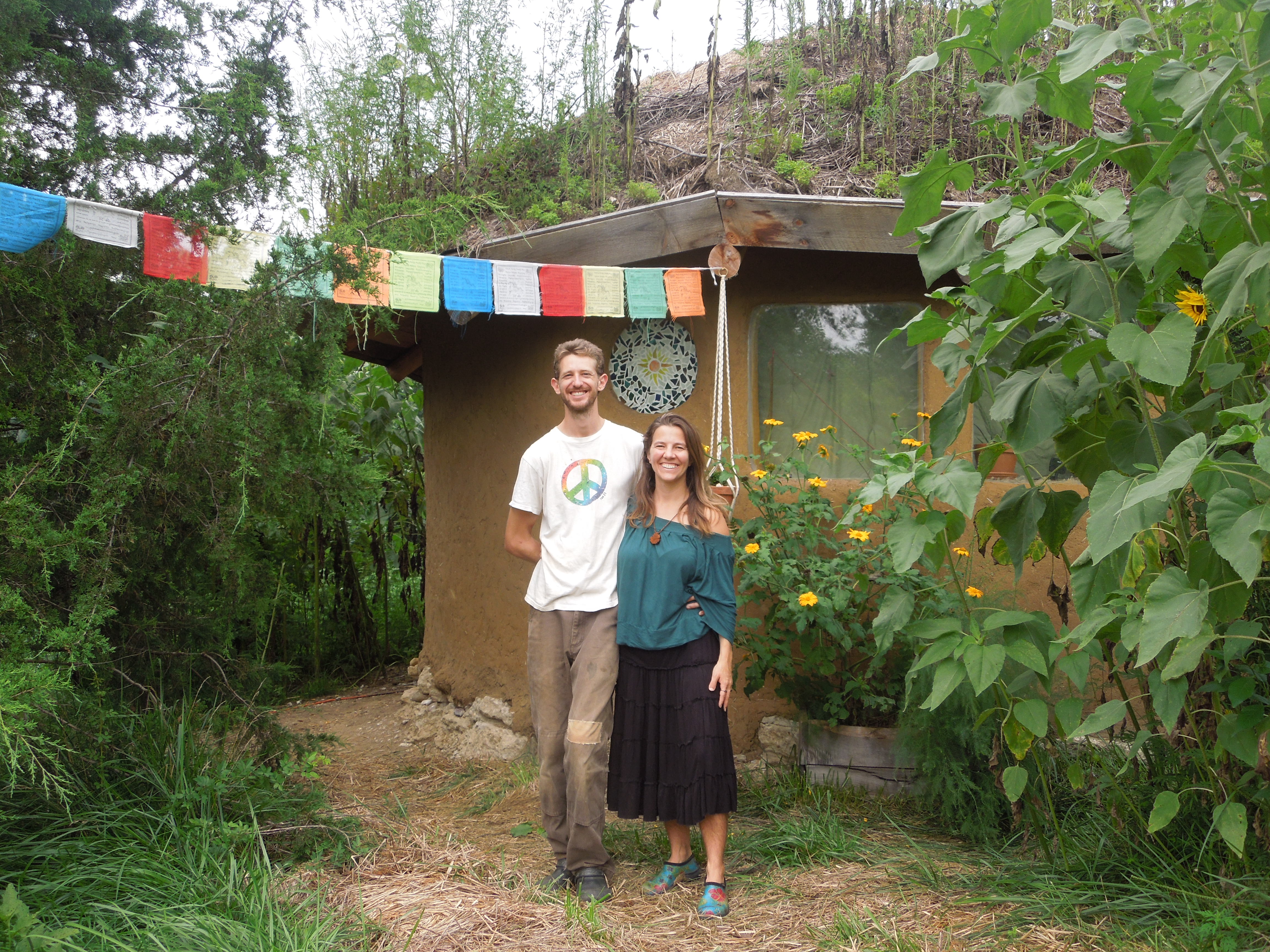Be on top of your tiny house building game with these ten tips for passive solar tiny house design!
These top ten passive solar design tips will give you a good starting point in designing your own tiny house by using the sun to your advantage for both heating and cooling your home. Often these techniques are low-tech, energy efficient and environmentally responsible.
(Many of the houses mentioned in this article are located at Dancing Rabbit Eco-village. If you want to see them first hand, consider coming for a visit. You’ll be able to talk to several green builders, check out the houses they live in, and learn a lot about sustainable living in the process.)
10. Cantilever your second story.

You probably know that a key feature of passive solar design is to construct your eaves in such a way that you block unwanted summer sun, while allowing those warming rays in during the winter, when you need them most.
Exact figures vary a lot, depending on where you live. So here is a great free tool you can use to calculate the right dimensions for your project at SunDesign.com.
Now, let’s take the principle a step further. By cantilevering your second story, you can avail yourself of the benefits of this of passive solar design technique , while extending the available floor space on your second story with minimal extra material expenditure.
Dan Durica, curator of Hardcore Sustainable on YouTube, used this technique with his house, The Flouch.

You can learn more about Dan’s building strategies here:
9. Move your air around.

Whenever you have two or more bodies of air at different temperatures, a subtle current will form until the air temperature is at equilibrium – it’s called convective air flow, and it’s the essential force that drives weather on our planet.
Inside the home, this effect takes place when you have warm air around a window and cool air in a shady corner. Over time, air temperatures will even out.
By using an energy efficient fan on a low setting, you can assist this process and get the most of your passive solar strategy to ensure your home stays more comfortable year round.
Leaving interior doors open, or installing ventilation throughout the home, can also prove useful.

Kyle Yoder built a custom mechanism to get the most out of his wood stove in his unique tiny house, The Gnome Dome.
8. Control your humidity.

Humidity is the bane of human comfort. In the summer, it leaves us feeling muggy and prevents our physiological cooling mechanism, (sweat), from functioning. In the winter, it causes us to feel cold and clammy at temperatures that would otherwise feel tolerable.
Taking steps to reduce humidity in your home will go a long way to ensuring that you feel comfortable. (This will also reduce mold growth, the gradual rot of natural building materials, and other factors as well.)
Some steps you can take include providing ventilation to kitchen and bathroom facilities in your home to send moist air outdoors. Design your house to include an air lock, (a foyer with two closing doors,) to prevent ambient moisture from entering your home. Consider limiting the number of houseplants you keep.
7. Beware thermal bridging.

Thermal bridging occurs when heat is transferred from one body of air to another through some kind of structural conduit. For example, roofing panels can be heated by the sun and transfer that heat to the wooden rafters they are attached to. From there, the heat travels through the wooden rafters and into the drywall or plaster attached on the interior side. In the winter, this pathway is reversed. In both instances, the rafters provide a way for heat energy to bypass the insulation in your ceiling.
You can combat this problem by adding layers of insulation in places where thermal bridging is likely to occur. Let’s use the same example of rafters. By installing a thin layer of foam, heat reflective lining, or another efficient insulative material between the roofing panels and the rafters, as well as between the rafters and the interior drywall, you can short-circuit heat transfer.
This will help your home to stay warm in winter and cool in summer, and save substantially on your heating and cooling costs.

You can read about how Tony “Papa Bear” Barrett used some of these kinds of materials in his energy efficient tiny house on wheels, The Bearmobile.
6. Learn to be flexible.

The energy efficiency and general comfort of a home have a lot to do with how its occupants interact with the space. There is no single, optimum configuration that will work in all situations all the time.
This means that the onus is on the home owner to know how to use the features of their house to their advantage in different circumstances. Knowing which windows to open, and when, to create an air current inside the home can do as much to keep cool as an electrical air conditioner, but without any extra energy inputs.
Adjustable blinds, thermal curtains, retractable awnings and so on are invaluable, and these features should be budgeted into your design plan.
5. Insulate your thermal mass.

Many amateur natural builders are confused by the concept of thermal mass. While it’s true that thick, beefy bodies of material can soak up heat during the day and then radiate that heat again when the air is cooler, this principle doesn’t work if the thermal mass isn’t insulated.
The reason is because you need something in place to prevent heat energy from simply escaping. Consider the famous Gobcobatron, for example, which is well documented on the Year of Mud website.
This space is nigh impossible to keep warm in winter, because heat energy is absorbed by the earthen walls and transferred quickly to the outdoor air. In the height of summer, heat transfers directly through the roofing materials, making it uncomfortable at some times of the day.
Insulation of one form or another, (straw bales, rigid foam, slag wool – whatever you decide is best in your situation,) is a vital ingredient in any passive solar recipe.

A good example of thermal mass in action is The Foxhole, where modern day pioneers Ben and Mae are experimenting with animal husbandry in the age of peak oil.
4. Install a Trombe Wall.

A Trombe Wall is basically a thin layer of rigid material added to the exterior of a home, which catches and absorbs all the solar energy that lands on it. This creates an air gap between the Trombe Wall and the main structural wall of the home, and very little heat transfer occurs as a result.
This strategy is especially useful when constraints are in place to limit how thick a wall can be, and therefore how much insulation can be used to moderate temperatures inside the home.
Traveling musician Daniel Weddle has used this technique to great effect in his tiny house masterpiece on wheels, Snails Away.
3. Install thermosiphoning air panels.

A thermosiphoning air panel is much like a Trombe Wall, with a few important differences. Where the Trombe Wall works to prevent heat energy from traveling into interior spaces, an air panel works to heat air and then transfer it into the home in a controlled way.
Often, these panels are made of metal and placed so as to absorb solar heat through the winter days. An aperture can be opened, which allows hot air behind the panel to be drawn into the home. When the hot air has run out, (or during the summer when it isn’t wanted,) this aperture can be left closed, allowing the wall to remain an insulated barrier.
2. Buy high quality windows.

Of all the shortcuts you might decide to take in order to save money while building your tiny house, glazing should never be one of them.

Thomas Kortkamp built his home, Mirth Lodge, on a shoe string budget using a variety of reclaimed, recycled and upcycled windows. Most of them are single-pane, and they work great during the afternoon for passive solar gain, but at other times they represent a huge loss of heat for Thomas during the winter.
He solved the problem with high quality thermal curtains, and he is now experimenting with sliding panels made of sturdy, recycled corrugated cardboard.
If you can afford triple-paned, or even quadruple- paned windows, it will pay dividends in terms of energy savings over time.

You can learn more about direct, passive solar heating through south-faced windows works by taking a look at village elders, Dennis and Sharon, and their natural home, Robinia.
1. Build a south-facing green house.

By far and away, one of the best strategies for keeping a house warm in winter is to build a greenhouse on the southern exposure of your home.
Hassan Hall, of CobWallBuilder.com, is one of the main proponents of this technique at Dancing Rabbit, and has used it to excellent effect in one of the tiny homes he has built for a client. (It works so well, the homeowners can sit inside the greenhouse wearing a t-shirt and shorts while several feet of snow lie on the ground outside.)

The greenhouse effect is quite real. Solar energy heats air inside the greenhouse, which can then be vented into the home through an open door or windows. Of course, this also extends the growing season in northern climates, allowing homeowners to nurture seedlings until the ground is warm enough for planting.
In the summer, when this heat energy isn’t wanted, greenhouse panels can be temporarily removed, converting it into a screened porch.

Katherine Hanson, who lives in a house made from a recycled bus, also uses this strategy to stay warm in winter.
If a passive solar natural building feels like the right style of tiny house for you, these techniques will empower you to build a space that is comfortable year round, while reducing your costs to maintain the home and lowering your carbon footprint.
Many of the homes mentioned in this article can be seen in person at Dancing Rabbit Eco-village. If you want to spend some time with the people who built them and pick up some of the finer nuances of passive solar design, make sure to keep an eye on our annual visitor program, and schedule a time to hang out with us soon.




Does the tiny house movement approve of burning wood for heat? That does not seem consistent with decreasing one’s carbon footprint.
Carbon from wood comes from wood comes from wood….. Get the picture? Carbon from ground goes to atmosphere and then where? It accumulates because it can’t go back to where it came from. Wood is sustainable, oil is not!
Wood may be sustainable, but burning it really does a number on air quality; leading to burn bans. I get the picture on carbon from wood comes from wood, but not releasing it into the atmosphere would be better. It’s a reasonable question.
I was just passing through and saw this comment. Calm down Joe Scmoe. There is a more efficient way of burning wood. Allison- youtube “jet stove” or better yet, “Jet Stove Mass Heater” it’s pretty cool. Burns wood at like a 90% efficiency. That means less smoke which equals smaller carbon footprint than just burning wood in a fireplace which is like 10% efficient according to sierraclub.org. Oh, it’s also called a rocket stove.
thanks . very useful article.